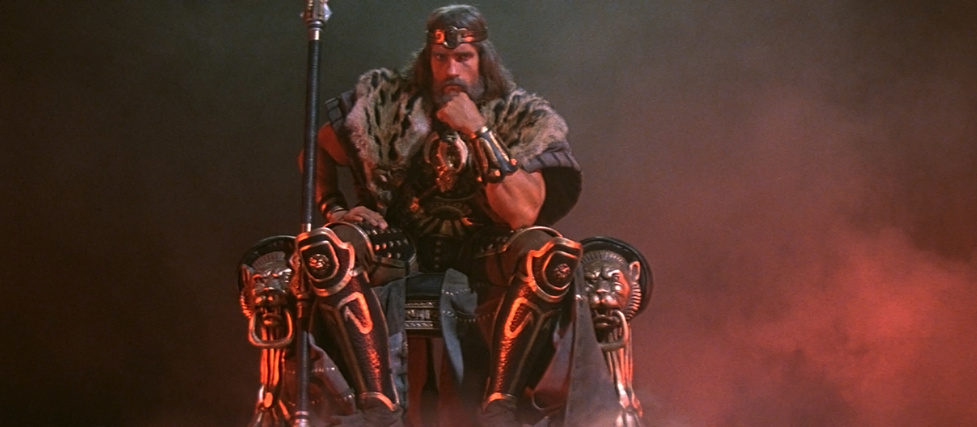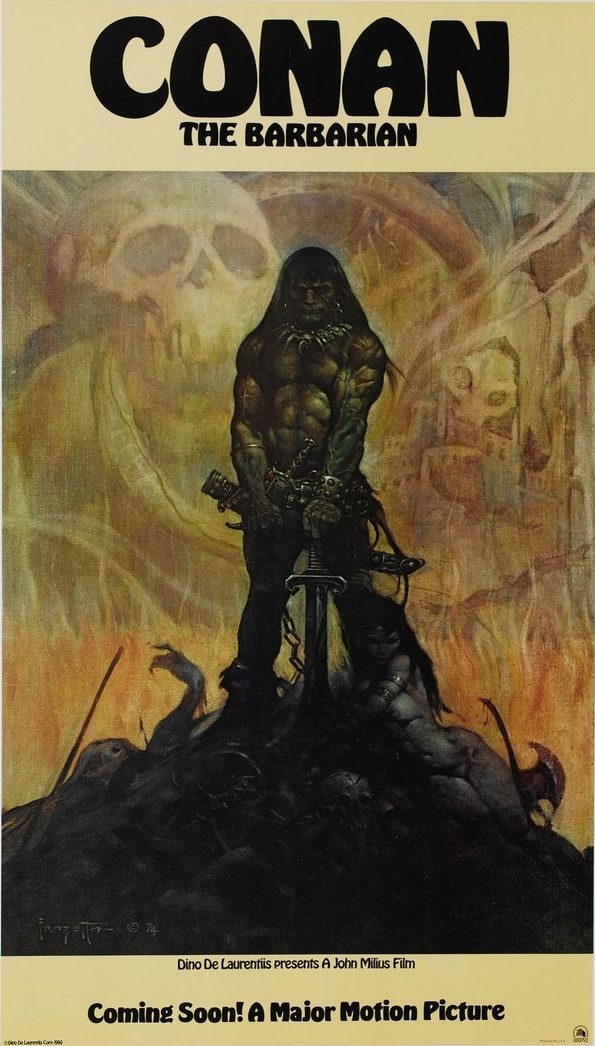

“What is best in life?”
“To crush your enemies, to see them driven before you, and to hear the lamentation of their women.”
Conan the Barbarian is perhaps the purest cinematic distillation of the sword-and-sorcery genre. Maverick filmmaker John Milius directs from a script co-written with fellow provocateur Oliver Stone, bringing to savage life the iconic warrior of Robert E. Howard’s classic tales and the definitive artwork of Frank Frazetta.
The film stars Arnold Schwarzenegger in a breakout performance, so muscle-bound at the time that he was forced to perform all of his own stunt work because an appropriately-proportioned double could not be found. Seemingly tailored to its leading man, the character is streamlined from the occasionally thoughtful pulp hero of Howard’s stories to an austere, single-minded seeker of vengeance. It’s an unconventional role for a protagonist, requiring physicality and screen presence and little else. But it proves a perfect match for Schwarzenegger’s unique skill set and his limitations are disguised by strong turns from his supporting cast, especially James Earl Jones as the evil wizard Thulsa Doom and Max von Sydow as the grizzled King Osric.
Narrated by the Wizard of the Mounds (Mako Iwamatsu), the story is set some 10,000 years in the past and posits a world where magic and mythical creatures are real. It adriotly chronicles Conan’s early years (here played by Jorge Sanz)—during which he sees his village ransacked by marauders and his parents (William Smith, Nadiuska) murdered at the hands of evil sorcerer Thulsa Doom—then quickly moves through his time as a slave, then a gladiatior, and finally, a freed man bent on violent retribution. He wanders the world, visits a prophetic witch (Cassandra Gava), befriends a master thief (Gerry Lopez), steals a valuable jewel, slays a giant snake, takes a lover (Sandahl Bergman), and eventually confronts his mortal enemy on the parapet of a pagan temple. Along the way he slaughters many men.
Though the material lends itself to camp—brawny warriors, nude cultists, cannibalistic orgies, shapeshifting serpents, grotesque monsters, wicked magicians, gory combat—Milius maintains an air of the mythical through dignified storytelling and a lavish production. Awesome location shoots, elaborate set and costume designs, brutally visceral action, understated practical effects, Basil Poledouris’s fitting score, a literal cast of thousands—these elements are skillfully arranged to effectively transport the viewer to a world of heroic adventure and occult intrigue.